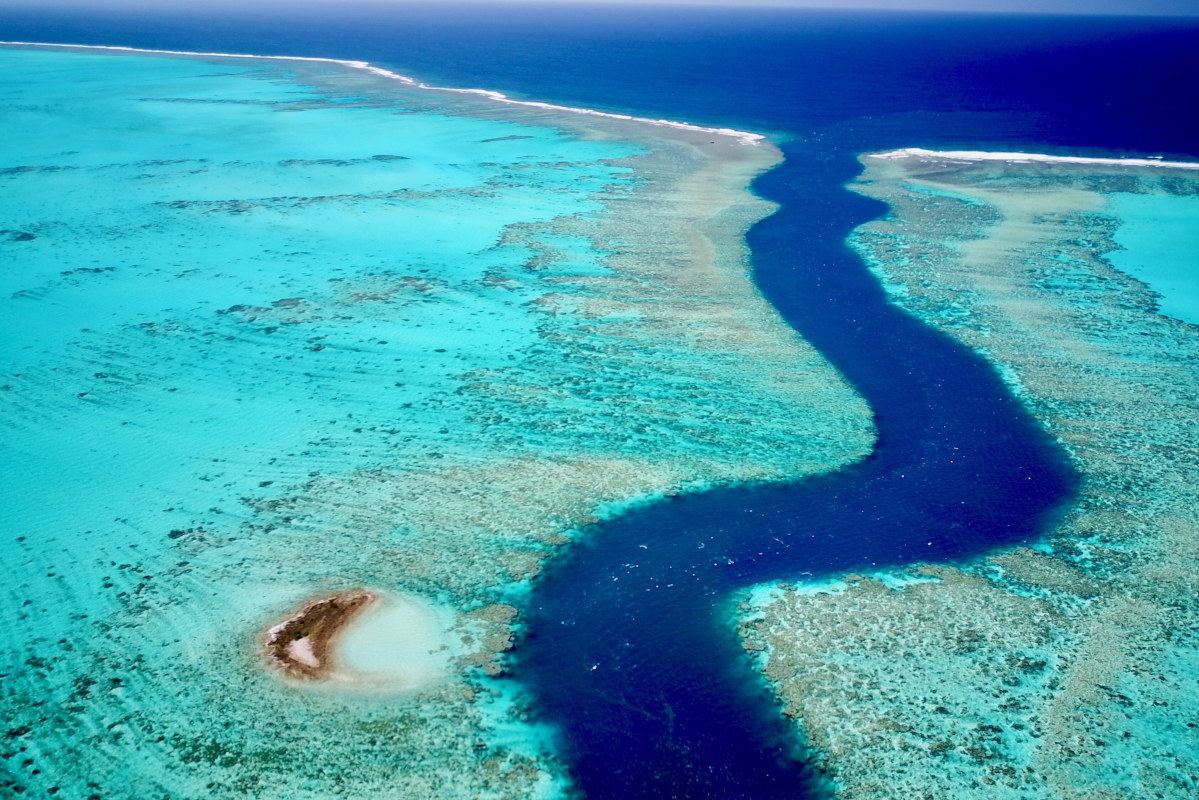Nine colourful spots to visit in Southern Europe
Photo © Pexels

Southern Europe is a mishmash of colours. In cities like Cinque Terre or Girona, the streets contain bright-coloured buildings aplenty; from a vigorous orange to a soothing green and everything in between. If you, however, prefer a more single-toned streetscape, other Southern European spots can cater to your tastes – the purple lavender fields of the Provence, the yellow palace of Sintra or the alienating ‘Smurfs village’ of Juzcar, where every wall is painted blue, to name a few.

Tuscany. Photo © Pexels
Red/ Val d’Orcia, Tuscany, Italy
Whereas the Tuscan landscape is usually defined by smooth hills and elegant cypresses, in April and May, the bright-red poppies are the protagonists of the region’s landscape. This little flower adores the Tuscan climate and grows lavishly in and around the natural reserve of Val d’Orcia. The crimson variety that takes over Southern Europe in spring is even nicknamed ‘the Tuscan poppy’. Besides it being easy on the eyes, the flower is also valued for its medical purposes. In the Roman age already, they brewed it into a tea which would ‘sooth away the aches of love’. From the 18th century on, the flower was used to create opium, a dangerous and illegal drug that is mainly produced in Central America, South-East Asia and the Middle East. In Val d’Orcia, however, poppies are nothing more than a feast for the eyes, preluding the soothing Tuscan summer.
There are multiple direct flights to both Florence and Pisa every day. Both are great starting points for a road trip through Tuscany.

Mer de Glace. Photo © Unsplash
White/ Mer de Glace, Mont Blanc, France
What better place to look for the whitest spot in Southern Europe than on the Mont Blanc, or White Mountain? On its northern slope, the impressive Mer de Glace (Sea of Ice) stretches out – France’s biggest glacier. The frozen river is 12 kilometres long and up to half a kilometre deep and moves an impressive 95 metres a year. In summer, hikers can walk alongside the frozen river and enjoy the spectacular mountain sights and dazzling vistas. In winter, you must be on skis or a snowboard to inspect the glacier from up close. If you are lucky, you can ski all the way down to the village of Chamonix-Mont-Blanc, a trip of about ten kilometres. Here, you can hop on the cable car and head back up again.
Take one of the many flights that leave for Geneva (Switzerland) from London and continue by train to Chamonix, where you take the cable car.

Provence. Photo © Unsplash
Purple/ Provence, France
The Southern-French region of the Provence is as odorant as it is beautiful. Delicious herbs like thyme, rosemary, oregano, marjoram and summer savory grow everywhere you look and are sold in their dried form as ‘Herbes de Provence’. Yet, the region’s most iconic plant is undeniably its lavender. Pictures of acres-wide fields of the purple gold adorn calendars and screensavers worldwide, but nothing compares to gazing at them in real life. The many, remote fields are as stunning as they come, but make sure to pass the Abbey of Sénanque, as well. It might not be a household name like the Eiffel Tower or the Palace of Versailles, but the photogenic sight of the medieval monastery amidst the mauve fields appears on many a Facebook timeline. Lavender aficionados better plan their trip to Southern-France well as the lavender gloom only lasts from the last week of June until early August.
One way to go to the Provence is by taking the Eurostar, straight from London to Avignon. Another option is to fly to Marseille and rent a car or take public transport to continue your trip.

Salinas de Torrevieja. Photo © Unsplash
Pink/ Salinas de Torrevieja, Torrevieja, Spain
A mesmerising, fuchsia lake. While it sounds like a line from The Beatles’ Lucy In The Sky With Diamonds, it actually paints quite an accurate picture of the Salinas de Torrevieja (the Salt mines of Torrevieja). This humongous puddle of salty water was originally designated for fishing. From the 14th until the 18th century, fishermen threw out their nets here, but without much luck. The water is so salty that the fish swam away as soon as they arrived. In the 1700s, they turned the lake into a salt mine, which it still is today. To why the water has its unique colour, scientists have yet to find a definite answer. They are convinced that it has something to do with the halobacteria and a type of algae called Dunaliella Salina. Both thrive in saltwater and the red pigment they secrete would account for the peculiar colour. Whatever the reason, the Salinas de Torrevieja are a paradise for nature lovers and influencers, wanting to make that perfect snapshot.
Torrevieja is just a one-hour bus ride away from Alicante, to which Ryanair and EasyJet offer multiple flights a day from most of London’s airports.

Sintra. Photo © Unsplash
Yellow/ Palácio de Pena, Sintra, Portugal
In a castle-packed village, you must go the extra mile to stand out. When, in the 18th century, the Portuguese royals decided to build a summer residence in Sintra – a hilly coastal town near Lisbon – they ignited a castle craze in the sleepy village. In a desperate attempt to become friends with the monarch, the country’s richest built themselves palaces in the town as well. The result: in no time, Sintra was packed with nothing but lush residences. The most unique one is the Palácio da Pena, a bright-yellow, eclectic masterpiece, towering out above town. It was built by the royal family in the 19th century, replacing the old one. The yellow, exotic-looking masterpiece is an intriguing cocktail of Moorish, Manueline, Neo-Romanesque, Neo-Renaissance and Neo-Gothic elements. Its interior is less colourful but equally impressive, with plenty of rich woodwork and fin-de-siècle decorations. Cast a glance at the impressive and unique ceilings, as well. To reach Palácio de Pena, take tourist bus 434, which drives uphill four times an hour during high season. Avid hikers can head up on foot.
Many airlines fly from London to Lisbon multiple times a day. From here, Sintra is just a one-hour train ride away.

Puy de Dome. Photo © Pixabay
Green/ Puy de Dôme, France
As violent as its volcanic eruption was around 7,780 years ago, as peaceful does the Puy de Dôme look today. The 1,465-metre-high lava dome is now covered in greenery and is a hikers’ Walhalla. Climb to the top by the Roman road that runs from Ceyssat to the start of the Chemin Des Muletiers, the most famous walking trail up. Once up, your efforts are rewarded with a most-marvellous view over the Massif Central in general and the Chaîne des Puys in particular. This belt of cinder cones, lava domes and maars is all that remains of the region’s volcanic past. Daredevils should not walk back down the way they came but opt for a more adventurous method to descend. The Puy de Dôme is known as one of Europe’s best spots for paragliding. So, strap on a parachute and experience the Chaîne des Puys from a bird’s perspective.
A trip to Puy De Dôme takes some time. By train, it takes you about eight hours to go to the city of Clermont-Ferrand, if you change trains in both Paris and Lyon. With KLM and Air France, you can fly to Clermont-Ferrand from Heathrow, this takes you approximately four hours, with a stop in Amsterdam or Paris.

Juzcar. Photo © Ernest+Nuria
Blue/ Júzcar, Spain
When passing the sleepy mountain village of Júzcar today, it is hard to believe that it once was one of Andalusia’s famous white villages. In 2011, production company Sony Pictures struck a deal with the town’s government to paint every wall in the village blue to promote the new Smurfs movie. 4,000 litres of blue paint were spilled over the white walls of the houses and even the church, but the result sure was unique. The deal was that Sony Pictures would paint every wall white again by December, but in a referendum before, the 200 villagers decided to stick with the blue. The reason for that was that in the six months of the campaign, the tourist rate increased with 2,000 per cent. Over 95,000 people visited the tiny Smurfs’ village in just half a year time. Today, it is way calmer in Júzcar, making it the perfect spot for a relaxed day away from the city. So, what are you still smurfing for?!?
Take one of the many flights from London to Malaga or Gibraltar. From Malaga, you are still a 45-minutes bus drive to Marbella and a one-hour taxi ride away from Júzcar. From Gibraltar, you have to do a similar trip. This time, with a stop in Estepona.

Cuevas de Can Riera. Photo © ig: @eloyssemb
Orange/ Cuevas de Can Riera, Barcelona, Spain
Why head to America for something we have in Europe ourselves? At the Cuevas de Can Riera, just outside of Barcelona, you walk through a miniature version of Arizona’s Antelope Canyon. With its smooth lines and nearly-artistic curves, the resemblance is uncanny. Unfortunately, it is quite a bit smaller. After having taken a few pictures in the cave and perhaps having enjoyed a small picnic, there’s not much more to do than to continue your walk. Luckily, the nature surrounding it is equally stunning, with dark-green trees contrasting with the bright-red soil. So far, many tourists have yet to stumble upon this hidden gem. So, now might be the perfect time to visit it.
Tonnes of airlines fly from London to Barcelona multiple times a day. From the airport, you can get to Torrelles de Llobregat with two busses and a train in a little over an hour. Here, you can start your three-kilometre hike to the caves.

Lanzarote. Photo © Unsplash
Black/ Lanzarote, Canary Islands, Spain
Exotic islands usually come with white beaches on which you can lie underneath a palm tree. In Lanzarote, black is the new white. The island is covered in ashes and volcanic rock, painting it – Rolling Stones-wise – black, almost everywhere you look. Most famous is the Timanfaya National Park, a moon-like terrain that got its current form by over 100 volcanic eruptions between 1730 and 1736. Yet, there is more black beauty up for grabs on the island. At the northern shores, the dark and pointy Roque Del Herrero towers high above the Atlantic water. And, as dead the black soil of Tenerife might look, as fertile it is; hence the many exquisite vineyards on the island. If you want to put your towel down on a white beach instead, Lanzarote also has plenty of golden sandpits, like Playa de
Papagayo.
Lanzarote is easily reachable from London. Multiple airlines fly you to the island in a little over four hours.
Subscribe to Our Newsletter
Receive our monthly newsletter by email




